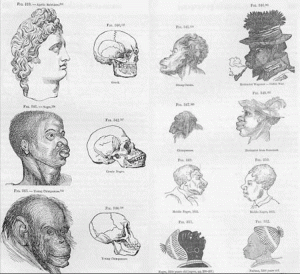Ellis Island is one of the most important sites in the history of New York and in the history of immigration in the United States. According to some estimations, close to 40% of current U.S. citizens can trace at least one of their ancestors to one of the millions of immigrants that came through the island.
When Ellis Island was established as a federal immigration station in 1892, patterns of immigration to the United States were shifting away from Northern and Western Europeans toward Southern and Eastern Europeans. This included Jewish people escaping oppression and Italians escaping widespread poverty. Generally, the immigrants that came through Ellis Island left their countries of origin to escape war, drought, famine, oppression, religious persecution, or inescapable poverty and search for new opportunities provided by the United States.

Immigrants waiting to be processed on Ellis Island
However, as the archaeological record helps to reveal, any depictions of Ellis Island as a gateway to a new world and a haven for immigrants are severely romanticized and inaccurate. The island earned the nickname “Island of Tears” for the harrowing experience it provided for exhausted immigrants coming off long boat journeys. Also, as well as being a center for immigration, the island was an important cite of deportation. Archaeological excavations in the 1980s found the IDs of many suspected communists that were deported for being “politically subversive”. Excavations also found a jigsaw puzzle used as part of an “intelligence test” in the 1910s. According to the physician who developed the puzzle and the accompanying “Feature Profile Test”, Howard A. Knox, “The purpose of our mental measuring scale at Ellis Island is the sorting out of those immigrants who may, because of their mental make-up, become a burden to the State or who may produce offspring that will require care in prisons, asylums, or other institutions.” This puzzle replaced a more unfair I.Q. test based on cultural knowledge many immigrants did not have, but it still led to the immediate deportation of 957 people in 1914 who were considered “mentally defective” and tore families apart. The “Feature Profile Test” also reflected an emerging eugenics and anti-immigrant movement that led to the Immigration Act of 1924. This act limited immigration based on nationality in an attempt to keep out “undesirable” groups. These groups included Jewish people who would later attempt to flee the Holocaust.

The jigsaw puzzle used to test the “intelligence” of incoming immigrants
It is important for the United States to learn from its troubled history with immigration in order to fully understand the sanctuary it is capable of providing for people in truly desperate situations. For this sort of understanding to occur, it is necessary to destroy the persisting nationalistic mentality that immigrants are a burden or pollutant to the United States population.
Sources
http://www.nytimes.com/1983/07/31/nyregion/us-seeking-relics-of-ellis-island-s-past.html
http://www.history.com/topics/ellis-island
https://www.nps.gov/elis/learn/historyculture/collection-research.htm
Further Reading
https://www.scientificamerican.com/article/ellis-island-challenging-the-immigrant/
Image Sources
http://teacher.scholastic.com/activities/immigration/timeline_photos/1892_small_fullsize.jpg


